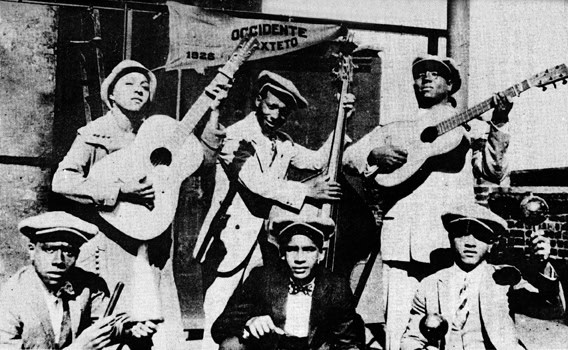
Birth: February 6, 1895
Death: December 17, 1965
The Voice of Cuban Trova
Welcome to our series on the most influential and iconic Cuban musicians and composers! In this first installment, we’ll be exploring the life and legacy of María Teresa Vera, a true pillar of the Cuban trova movement whose contributions to the country’s musical heritage are nothing short of remarkable.
Born on February 6, 1895, in the charming town of Guanajay, María Teresa Vera grew up in a world filled with music. Her mother, a woman of color who worked as a servant for the wealthy Aramburu family, would often sing traditional Yoruba songs to her, igniting a lifelong passion for melody and rhythm in the young girl. From a tender age, María Teresa displayed an innate musical talent, turning everyday objects into makeshift instruments and filling her surroundings with the sounds of her budding creativity.
Despite facing challenges early on, including the mysterious disappearance of her Spanish military father, María Teresa’s life took a fortunate turn when the Aramburu family recognized her potential and took her under their wing. Their support and guidance provided her with opportunities that might have otherwise been out of reach for a young woman of her background in those times, such as attending school and receiving an education that would later prove invaluable in her musical career.
María Teresa’s journey to stardom began in 1911, at the age of 16, when she made her debut performance at the prestigious Teatro Politeama Grande in Havana. There, she mesmerized the audience with her rendition of the criolla “Mercedes,” accompanied by none other than the song’s composer, Manuel Corona. This memorable performance marked the beginning of a fruitful mentorship between the two artists, with Corona taking María Teresa under his tutelage and teaching her the intricacies of the guitar and the secrets of composing and performing trova music.
Over the next few years, María Teresa’s talent and dedication to her craft continued to flourish. In 1918, she embarked on a transformative journey to the United States alongside Corona and Rafael Zequeira, with whom she formed a dynamic musical duo that specialized in Cuban melodies. This trip proved to be a turning point in her career, as the pair’s undeniable chemistry and musical prowess caught the attention of RCA Victor, one of the most prominent record labels of the time. The duo signed an exclusive contract with the label, resulting in an astonishing 149 recorded works over the course of a decade, cementing their status as one of the most beloved and influential musical acts in Cuban history.
Even after Zequeira’s untimely passing, María Teresa refused to let her passion for music fade. She continued to perform as a solo artist and collaborated with a diverse array of musicians in various configurations, including duets, quartets, and sextets. One of her most notable partnerships was with Lorenzo Hierrezuelo, with whom she shared a remarkable 27-year professional relationship. Throughout her career, María Teresa remained steadfast in her commitment to preserving and promoting the tradition of troubadour music, even as newer styles like the son gained popularity among audiences.
Although María Teresa’s compositional output was not as extensive as some of her contemporaries, the works she did create are considered true gems of the Cuban musical canon. Her habanera, “Veinte años” (Twenty Years), featuring lyrics by Guillermina Aramburu, has become a timeless classic, beloved by generations of music lovers both in Cuba and around the world. The song’s poignant lyrics and María Teresa’s heartfelt delivery continue to resonate with audiences, serving as a testament to her unparalleled ability to convey emotion through her music.
Sadly, María Teresa Vera passed away in Havana on December 17, 1965, at the age of 70. Her death marked the end of an era in Cuban music, but her legacy lives on through the countless artists she inspired and the indelible mark she left on the country’s cultural landscape. In a touching display of respect and admiration, Cuban leader Fidel Castro personally arranged for a car to transport María Teresa’s body to her beloved hometown of Guanajay, where she received a heartfelt tribute from the community that had always cherished her and her music.
Today, María Teresa Vera is remembered as one of the most influential and iconic figures in Cuban music history. Her contributions to the Cuban trova movement, her unforgettable voice, and her unwavering dedication to her craft continue to inspire musicians and music enthusiasts around the world. Her life story serves as a powerful reminder of the transformative power of music and the enduring impact that one person’s passion and talent can have on an entire nation’s cultural identity.
As we continue our series on groundbreaking Cuban musicians and composers, we will undoubtedly encounter many more stories of incredible talent, perseverance, and musical innovation. However, María Teresa Vera’s legacy will always hold a special place in the hearts of those who love and appreciate Cuban music. Her voice, her spirit, and her unwavering commitment to her art will forever be remembered as a shining example of the very best that Cuba’s rich musical heritage has to offer.
In our next installment, we’ll be diving into the life and work of another Cuban musical icon, Manuel Samuell. So stay tuned, music lovers, as we continue to explore the fascinating world of Cuban music and the incredible artists who have shaped its evolution over the years!
